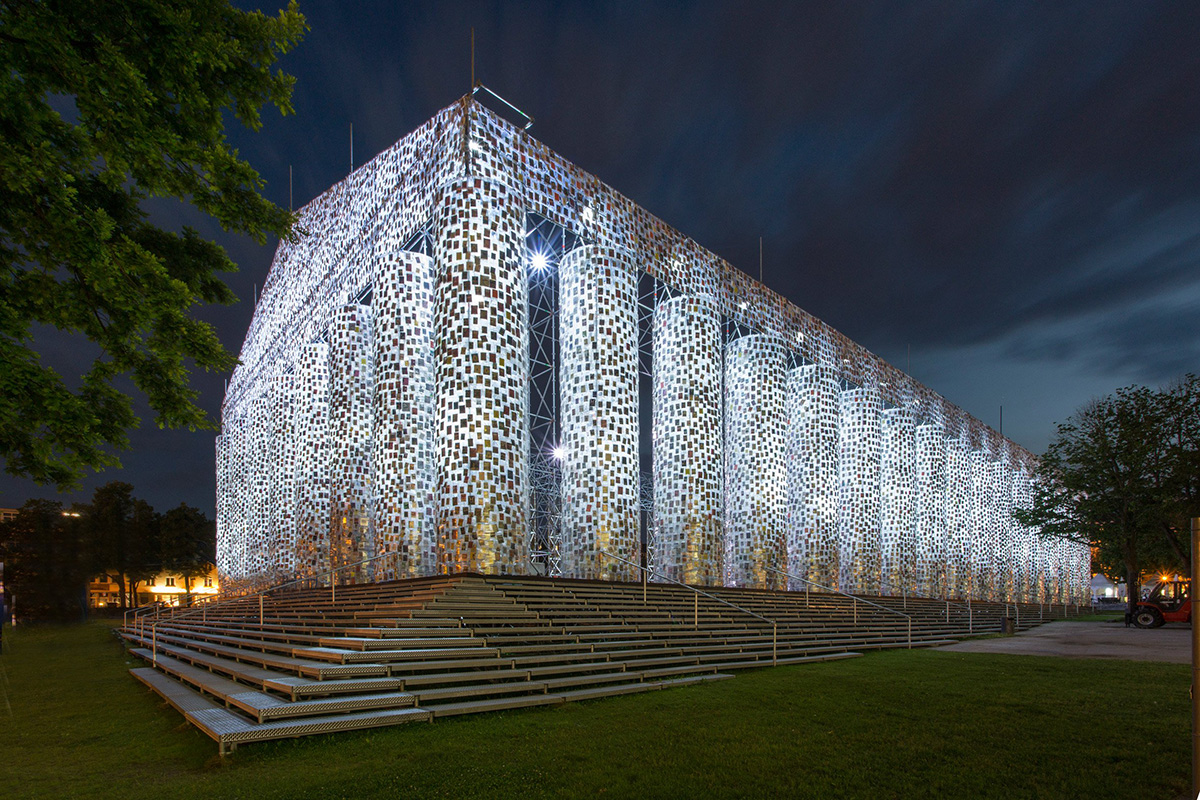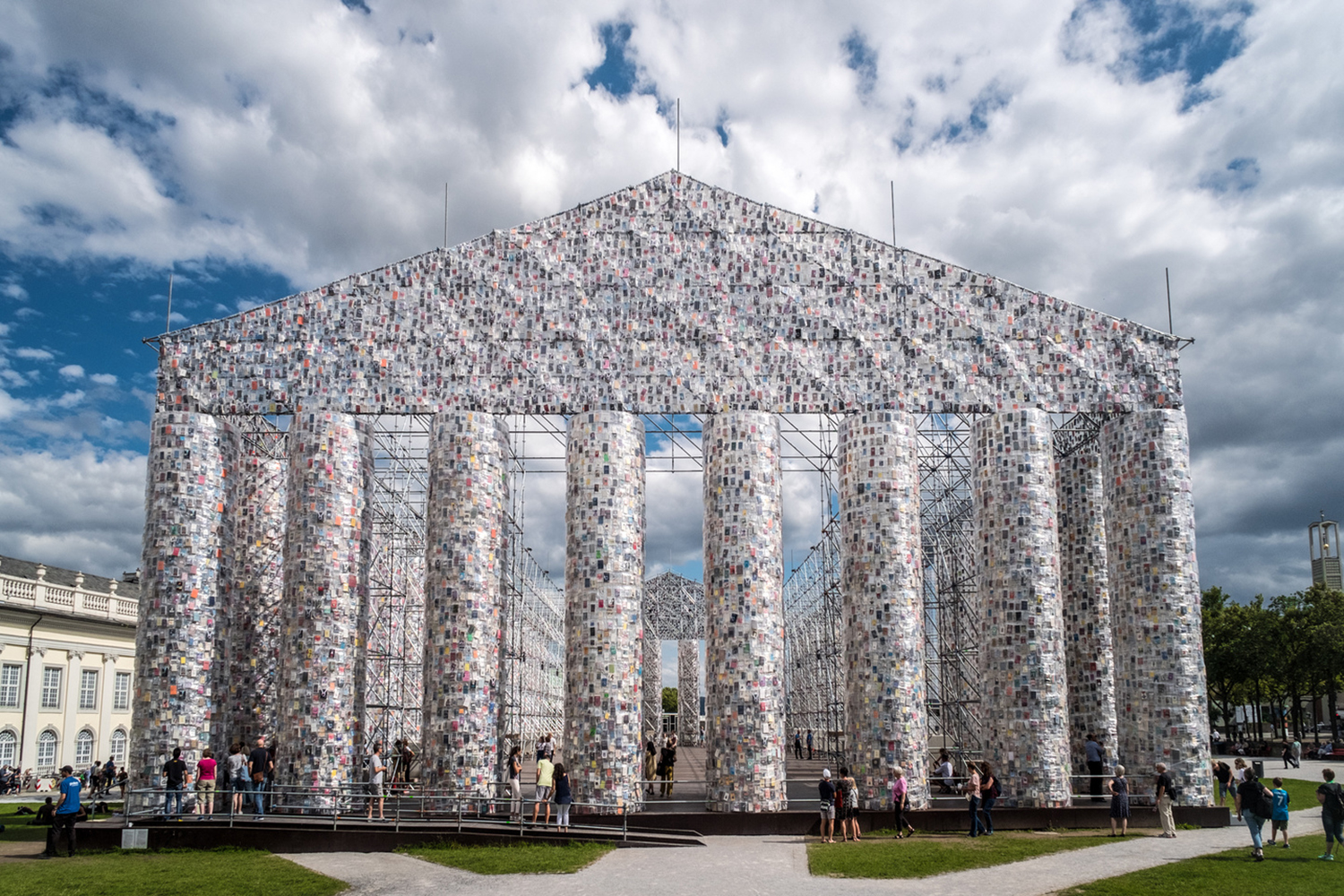Partenon De Libros
The Parthenon of Books (El Partenón de libros) is a powerful symbol of freedom of expression, censorship, and the power of literature. This magnificent work of art was created by the Argentinian artist Marta Minujín and exhibited twice, first in 1983 and then again in 2017. Both times, it sparked conversations and debates about the role of books in our society and the importance of free speech.
Challenges Addressed by Parthenon de Libros
Nowadays, we take freedom of expression for granted. We enjoy access to information and literature through digital libraries, online bookstores, and social media. However, that wasn't always the case. In many countries, censorship was, and still is, a real problem. Books have been banned, burned, or censored for religious, political, or moral reasons. The Parthenon of Books was created to highlight these issues and celebrate the power of literature to unite people.
Target of Parthenon de Libros
The Parthenon of Books was created to raise awareness about censorship and the importance of free speech. It was also designed to create a universal monument to literature and knowledge. The target audience was everyone who values freedom of expression, human rights, and literature. The Parthenon of Books was a call to action, urging people to speak out against censorship and defend the right to access information and literature.
Summary of Main Points
To summarize, the Parthenon of Books is a work of art that symbolizes the importance of literature, freedom of speech, and the fight against censorship. This magnificent structure was created by the Argentinian artist Marta Minujín in 1983 and 2017 and was exhibited in Germany and Argentina. The Parthenon of Books is a universal monument to knowledge and literature, urging people to defend their right to access information and speak up against censorship.
Personal Experience with Parthenon de Libros
When I visited the Parthenon of Books in Buenos Aires, I was struck by its scale and beauty. More than 30,000 books were used to create the structure, from banned literature to bestsellers. The books were wrapped in plastic to protect them from the weather, and they looked like colorful jewels in the sunlight.
The Parthenon of Books is not only a work of art, but it's also a powerful political statement. It reminds us of the power of literature to change the world and the importance of free speech. The fact that books were used to create this structure is also symbolic. Books have been censored, burned, and destroyed throughout history, and this work of art brings attention to these issues and celebrates the power of literature to overcome them.
Importance of Parthenon de Libros
The Parthenon of Books is important because it raises awareness about censorship and the importance of free speech. It's also a reminder that we must remain vigilant and not take these freedoms for granted. Furthermore, the use of books in creating the structure adds another layer of symbolism. It shows that literature has the power to overcome oppression and censorship, that knowledge cannot be destroyed, and that ideas are immortal. The Parthenon of Books is a testament to the power of human creativity and the importance of literature.
Symbolism of Parthenon de Libros
The Parthenon of Books is a symbol of literature, knowledge, and the fight against censorship. The structure resembles a classical Greek temple, a nod to the cradle of Western civilization and democracy. The use of books adds another layer of symbolism. The books represent the ideas, knowledge, and wisdom of humanity, and the plastic wrapping represents censorship and oppression. By turning banned books into a work of art, the Parthenon of Books shows that literature has the power to transcend politics and unite people through shared human experiences.
Question and Answer about Parthenon de Libros
Q1: What inspired Marta Minujin to create the Parthenon of Books?
A1: Marta Minujin was inspired to create the Parthenon of Books as a tribute to democracy and free speech. She wanted to create a structure that celebrated the power of literature and knowledge and highlighted the dangers of censorship.
Q2: How were the books for the Parthenon of Books chosen?
A2: The books for the Parthenon of Books were chosen based on their historical and cultural significance. They include banned books, best-sellers, and literature from different genres and styles.
Q3: What message does the Parthenon of Books convey?
A3: The Parthenon of Books conveys a message of freedom of speech, the importance of literature, and the fight against censorship. It's also a reminder that we must protect these ideals and not take them for granted.
Q4: Where can I see the Parthenon of Books?
A4: The Parthenon of Books was exhibited twice, in Kassel, Germany in 1983, and in Buenos Aires, Argentina in 2017. However, it's still possible to see photographs and videos of the structure online and in art books.
Conclusion of Parthenon de Libros
The Parthenon of Books is a powerful work of art that celebrates the power of literature, knowledge, and freedom of speech. Created by the Argentinian artist Marta Minujín, it's a universal symbol of the fight against censorship and oppression. The books used to create the structure add another layer of symbolism, representing the ideas and knowledge of humanity. The Parthenon of Books is a reminder that literature has the power to change the world and that we must protect our right to access information and speak up against censorship.
Gallery
Galería: El Partenón De Marta Minujín Construido Con 10 Mil Libros
Photo Credit by: bing.com /
Marta Minujín Recrea En Alemania Su 'Partenón De Libros' Con 100.000
.jpg?1499719299)
Photo Credit by: bing.com /
AMBIENTES | El Partenón De Los Libros Por Marta Minujin

Photo Credit by: bing.com /
El Partenón De Libros - Arte Y Ciudad - Arte Argentino | Conectar Igualdad
Photo Credit by: bing.com /
Marta Minujín's The Parthenon Of Books: A Living Elevation Of Social

Photo Credit by: bing.com / parthenon books marta documenta minujín forbidden kassel elevation relations cultural social living minujin flash mathias accomplishment celebration collection installation photography

Belum ada Komentar untuk "Partenon De Libros"
Posting Komentar